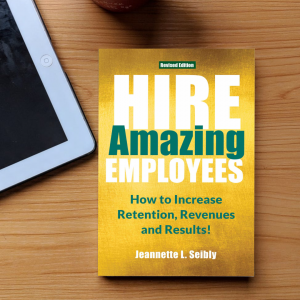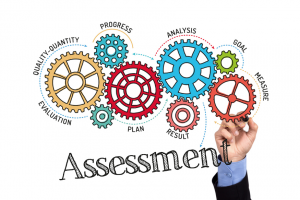
Many women and men today downplay their value, success, and awesomeness! Why? It’s not socially acceptable to share what you’ve accomplished. However, the good news is that this is quickly changing!
“Although self-promotion (communicating one’s past accomplishments and positive characteristics) is important for obtaining career and educational opportunities, women feel uncomfortable when doing it, which limits their self-promotion success.” (Sage Journals, 2019)
In my many years of delivering the award-winning “Get Your Brag On!” presentation, many men have also shared that they lack the skills to promote themselves effectively.
The misconception that you can rely on others to promote your achievements has proven to be a costly mistake for many. It’s led to missed job opportunities, lost sales, and overlooked awards, all because they didn’t take the initiative to showcase their own worth!
Stop Downplaying Your Accomplishments!
Why? We’ve been taught since we were very young that it’s wrong to brag! Baby Boomers and GenXs were often shamed by their parents, teachers, and others when they promoted themselves. Millennials and GenZs have peer group pressure to maintain the “We,” excluding the individual “I” from recognition.
Today, self-promotion in interviews, sales presentations, and award nominations is critical. Using “I accomplished” is also important. Yet, many deserving people shy away from doing so and, as a result, are not offered the job or contract or win recognition. Often, less qualified people achieve these results because they brag in a business-savvy manner.
Fill the Confidence Gap. In my experience, both women and men fear sharing their accomplishments. (I continue to emphasize both genders since many articles only focus on women.) While there are gender biases (e.g., men need to talk powerfully, but when women speak powerfully, they are seen as bossy), shameless self-promotion does build natural inner confidence when done in a business-savvy manner.
Inner power and mindful awareness naturally communicate confidence; most people want to work with winners!
I didn’t say it was easy … or that others would readily acknowledge your successes. I’m saying stand up and speak up about your accomplishments. It makes a significant difference in getting pay increases, job promotions, and closing sales.
Feel the Fear and Do It Anyway. Let go of your fears. If someone doesn’t like you, bragging won’t change their opinion. If others are jealous of your success, they won’t suddenly want you on their team. Get over trying to win others’ positive opinions.
Remember, do you only want to be liked and make friends in business? Or do you want to make money and achieve needed results? The irony is that when you build your true inner confidence, people are more likely to like you and do business with you!
Get Guidance on How to Share Your Successes with Others. One reason potentially successful people fail to brag is that they don’t seek out an industry mentor or hire an executive coach to help them learn the art of self-promotion. And it is an art! The other challenge is that many overlook the need to know their numbers, metrics, and other accomplishments. Instead, they take the latest saying or blurb and attempt to fit their accomplishments into it. The problem? It lacks authenticity and truth!
Start by completing the 5 simple exercises in the book “It’s Time to Brag!” Then, work with a good marketing or executive coach to fine-tune. Remember, the key is to differentiate yourself so that others readily understand what you’re saying and who you really are.
- Saying, “I’m a coach.” It does not differentiate you since there are 1,000s of coaches.
- “I’m a coach that inspires business professionals to succeed and win.” It uses words that are overused and fails to differentiate who you are.
- Saying, “I’m a Leadership Results Coach and, along the way, guided the creation of 3 millionaires.” It brags! Focuses. Differentiates. Attracts clients.
Be Authentic, and Don’t Exaggerate. Recently, I presented “Get Your Brag On!” A woman in the audience was livid and stated emphatically, “Everyone lies and cannot tell the truth about their accomplishments! They over-exaggerate!” In my experience, I find that most people struggle to be authentic and tell the truth about what they’ve accomplished. The lesson? Be honest – if someone finds out you lied, it will hurt your credibility now and in the future.
While many people are taught to tone down their achievements (or dumb them down), doing so is usually at their own expense. You want to keep your self-promotion and smart without using words that most people don’t readily understand (e.g., generous v. magnanimous). Plus, use accurate numbers, metrics, and estimates that reflect your successes.
Remember your goal — acknowledge your greatness, then share your self-promotion effectively.
Grab my book, “It’s Time to Brag! Business Edition,” and start bragging and self-promoting today!
©Jeannette Seibly 2019-2024 All Rights Reserved
 Jeannette Seibly is a Talent Advisor/Leadership Results Coach with over 31 years of practical experience guiding leaders and bosses to improve their hiring, coaching, and managing practices and produce amazing results! And yes, achieving business success always starts with having the right people in the right jobs! She has been an Authorized PXT Select® Partner for over 32 years. Contact Jeannette to learn more about these state-of-the-art job-fit assessment tools or how to coach and manage your people to achieve incredible results.
Jeannette Seibly is a Talent Advisor/Leadership Results Coach with over 31 years of practical experience guiding leaders and bosses to improve their hiring, coaching, and managing practices and produce amazing results! And yes, achieving business success always starts with having the right people in the right jobs! She has been an Authorized PXT Select® Partner for over 32 years. Contact Jeannette to learn more about these state-of-the-art job-fit assessment tools or how to coach and manage your people to achieve incredible results.
A note from Jeannette: Learning to self-promote or brag about your accomplishments is critical to winning the opportunity, job, sales contract, or well-deserved award. But too many people downplay and hide their achievements at their own expense. If you’re stuck (and most people are), contact me now for 1:1 coaching (after doing the exercises in the book “It’s Time to Brag!”) or to schedule me for the award-winning presentation Get Your Brag On!
 It’s time to talk it out! Are there days you dread managing people, projects, and your team’s financial performance? You’re not alone! Everyone has their blind spots! NOW is the time to get the guidance you need to make the right changes during 2024. I have extensive experience and wisdom guiding bosses and leaders to hire, coach, and manage their teams successfully. The bonus is that they achieve unprecedented results. Contact me to learn more about my in-depth, one-on-one, customized coaching programs.
It’s time to talk it out! Are there days you dread managing people, projects, and your team’s financial performance? You’re not alone! Everyone has their blind spots! NOW is the time to get the guidance you need to make the right changes during 2024. I have extensive experience and wisdom guiding bosses and leaders to hire, coach, and manage their teams successfully. The bonus is that they achieve unprecedented results. Contact me to learn more about my in-depth, one-on-one, customized coaching programs.
 This Book (“Hire Amazing Employees”) Can Help You Improve Your Hiring Process, by Nancy Schick, NY Employment Attorney and Mediator. I met Jeannette Seibly a few months ago In this Together Round Table, where I also learned about her book, Hire Amazing Employees. Since my clients frequently struggle with this task, I bought myself a copy and gave several as gifts. The book contains many helpful tips for avoiding the impact of hiring errors. Read the full testimonial here.
This Book (“Hire Amazing Employees”) Can Help You Improve Your Hiring Process, by Nancy Schick, NY Employment Attorney and Mediator. I met Jeannette Seibly a few months ago In this Together Round Table, where I also learned about her book, Hire Amazing Employees. Since my clients frequently struggle with this task, I bought myself a copy and gave several as gifts. The book contains many helpful tips for avoiding the impact of hiring errors. Read the full testimonial here.


 Jeannette Seibly is The Leadership Results Coach. She has over 30 years of award-winning international experience as an executive consultant, speaker, and business author. Her clients surpass the norm by working through sticky situations and challenging relationships to become positive influencers.
Jeannette Seibly is The Leadership Results Coach. She has over 30 years of award-winning international experience as an executive consultant, speaker, and business author. Her clients surpass the norm by working through sticky situations and challenging relationships to become positive influencers.  This week’s PODCAST: Listen to Want to Achieve Great Results? Use Peer Coaching with my guest, Meredith Bell, on
This week’s PODCAST: Listen to Want to Achieve Great Results? Use Peer Coaching with my guest, Meredith Bell, on 

 Jeannette Seibly is The Leadership Results Coach. She’s celebrating 30 years as an award-winning international executive consultant, speaker, and coach. Her clients value the listening and positive difference she brings to any conversation. Feel stuck in a sticky situation or in challenging relationships? Want straightforward counsel to blast through it? Contact Jeannette for a confidential discussion. PS: She’s also a three-time Amazon Best-Selling Author!
Jeannette Seibly is The Leadership Results Coach. She’s celebrating 30 years as an award-winning international executive consultant, speaker, and coach. Her clients value the listening and positive difference she brings to any conversation. Feel stuck in a sticky situation or in challenging relationships? Want straightforward counsel to blast through it? Contact Jeannette for a confidential discussion. PS: She’s also a three-time Amazon Best-Selling Author!
 Jeannette Seibly is The Leadership Results Coach. She has been an award-winning international executive and family business management consultant, keynote speaker, and author for over 29 years. Her focus is to guide leaders to make a positive difference. Feel stuck moving your team forward? Want straightforward counsel on how to do it? Let’s chat!
Jeannette Seibly is The Leadership Results Coach. She has been an award-winning international executive and family business management consultant, keynote speaker, and author for over 29 years. Her focus is to guide leaders to make a positive difference. Feel stuck moving your team forward? Want straightforward counsel on how to do it? Let’s chat!  Why do new hires leave so soon? There can be many reasons. But it’s often due to NO (or the poorly designed) new employee orientation and onboarding program! Be part of the 12% that onboards effectively! Want ideas to help you get started? Get your copy of the newly released,
Why do new hires leave so soon? There can be many reasons. But it’s often due to NO (or the poorly designed) new employee orientation and onboarding program! Be part of the 12% that onboards effectively! Want ideas to help you get started? Get your copy of the newly released, 


 Jeannette Seibly is The Leadership Results Coach. She has been an award-winning international executive and family business management consultant, keynote speaker, and author for over 29 years. Her focus is to guide leaders to make a positive difference. Feel stuck moving your team forward? Want straightforward counsel on how to do it? Let’s chat!
Jeannette Seibly is The Leadership Results Coach. She has been an award-winning international executive and family business management consultant, keynote speaker, and author for over 29 years. Her focus is to guide leaders to make a positive difference. Feel stuck moving your team forward? Want straightforward counsel on how to do it? Let’s chat! 

